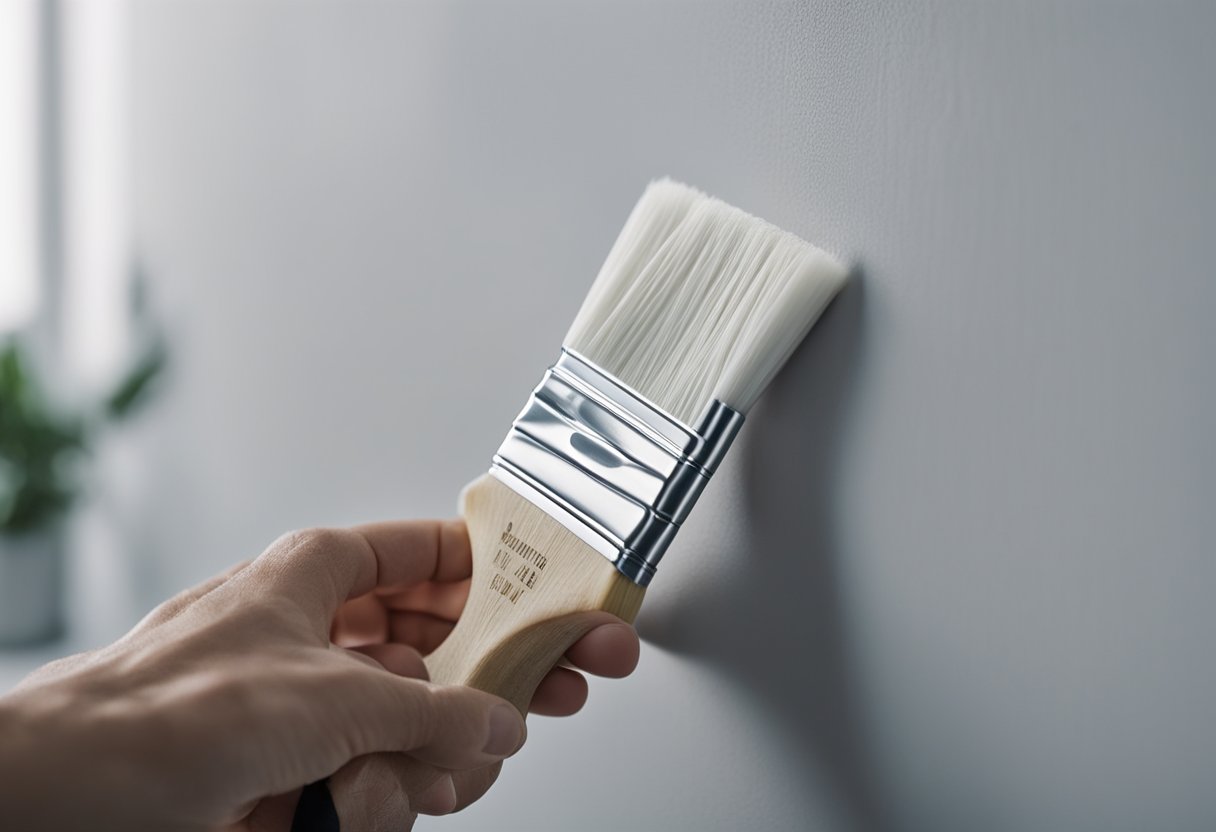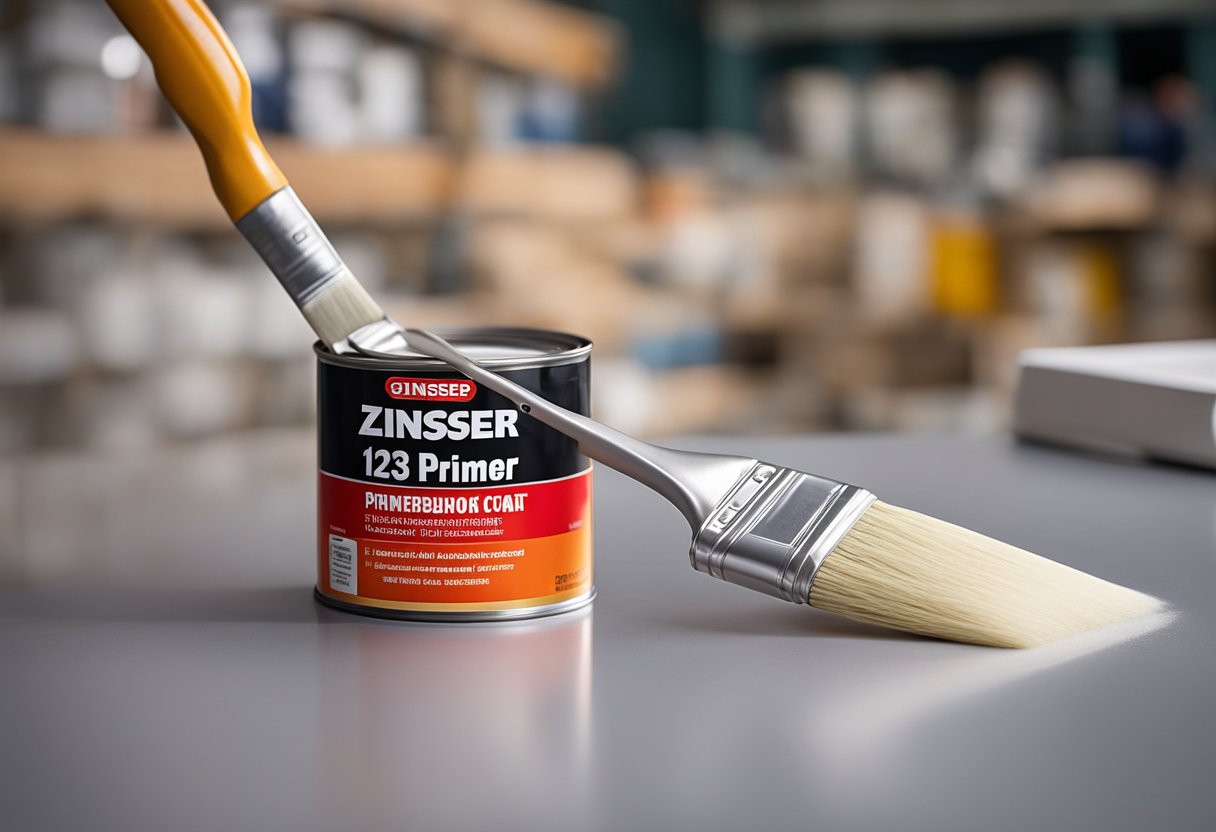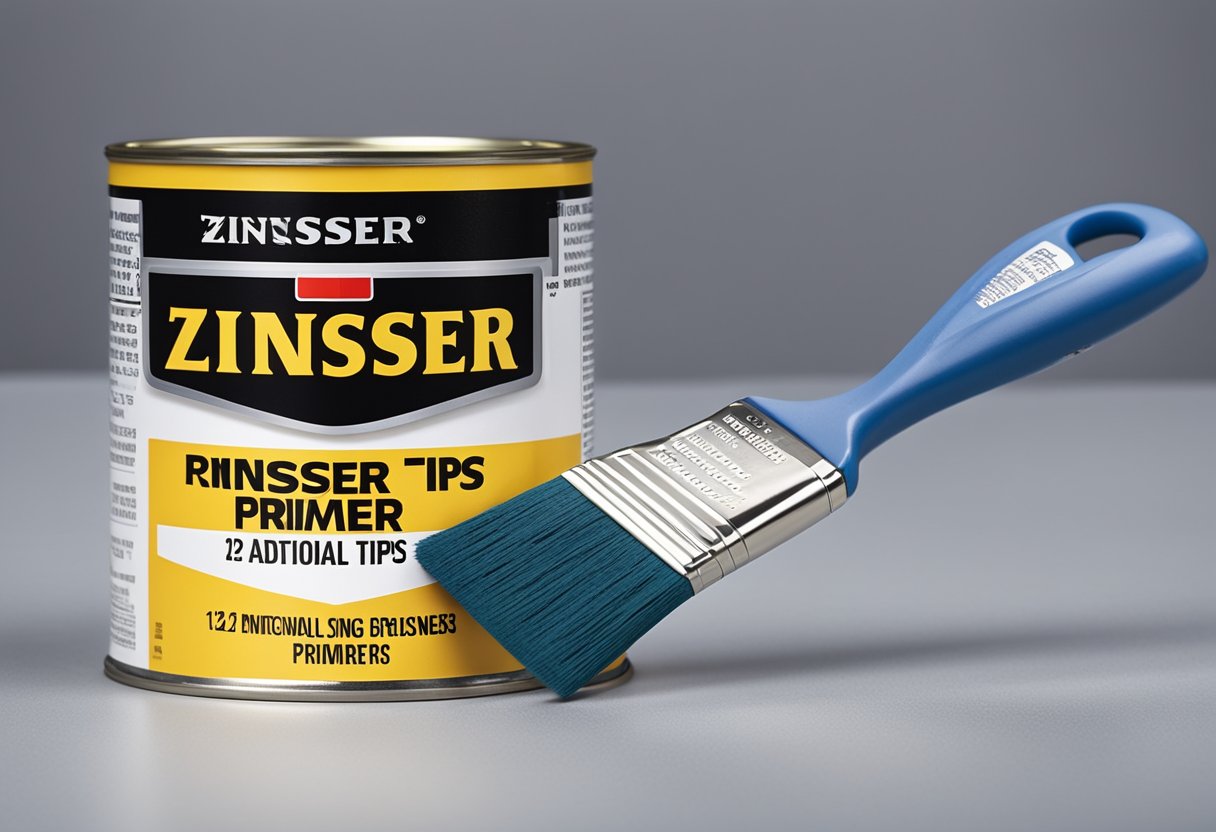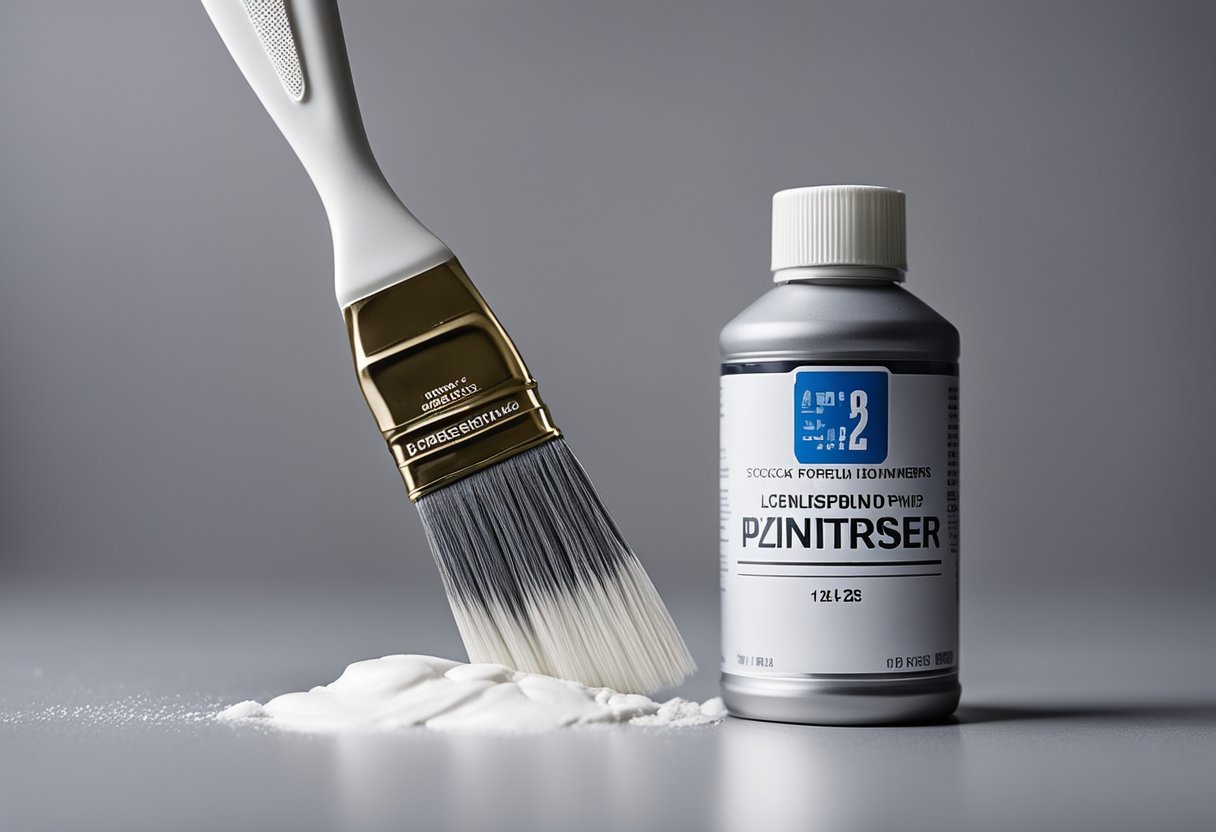I have been painting for years, and I have learned that a good primer is essential for any painting project. Zinsser 123 primer is one of my go-to primers because it is versatile and easy to use. In this article, I will share my experience with painting over Zinsser 123 primer and provide tips for getting the best results.
Understanding Zinsser 123 Primer is crucial before using it. This primer is water-based and can be used on a variety of surfaces, including drywall, wood, plaster, and masonry. It is an excellent choice for painting over glossy surfaces and previously painted surfaces. It dries quickly, is low odor, and can be cleaned up with soap and water.
To get the best results when painting over Zinsser 123 primer, proper preparation is key. The surface must be clean, dry, and free of dust and debris. Sanding the surface lightly can help the primer adhere better. Applying at least two coats of paint is recommended for the best results.
Understanding Zinsser 123 Primer
https://www.youtube.com/watch?v=cjejO4dXdf4&embed=true
As a professional painter, I have used many primers over the years, but one that stands out from the rest is Zinsser 123 Primer. It is a water-based primer that can be used on both interior and exterior surfaces. In this section, I will explain what Zinsser 123 Primer is, its features, and why it is a great choice for your painting projects.
Zinsser 123 Primer is a versatile primer that can be used on a wide variety of surfaces, including wood, metal, plastic, and drywall. It is a low odor primer that has a low VOC content, making it an eco-friendly option for your painting projects. The primer is also a sealer and a stain blocker, which means it can prevent stains from bleeding through your paint.
One of the key features of Zinsser 123 Primer is its excellent adhesion. It can adhere to surfaces that are difficult to paint, such as glossy surfaces, without the need for sanding or deglossing. This feature saves you time and effort during your painting project. Additionally, Zinsser 123 Primer is a great choice for covering stains, such as water stains, smoke stains, and ink stains.
Another benefit of Zinsser 123 Primer is that it is easy to apply. You can apply it with a brush, roller, or sprayer, and it dries quickly, allowing you to apply your topcoat within an hour. The primer is also compatible with both oil-based and water-based paints, which gives you more flexibility when choosing your topcoat.
Overall, Zinsser 123 Primer is an excellent choice for your painting projects. Its versatility, adhesion, stain blocking, and low odor make it a top choice for professional painters and DIYers alike. If you want a primer that will give you great results and save you time and effort, Zinsser 123 Primer is the way to go.
Preparation Before Painting
Before painting over Zinsser 123 primer, it is essential to prepare the surface properly. Proper preparation ensures that the paint adheres well to the surface and lasts longer. Here are some steps to follow:
-
Clean the surface: Clean the surface with a damp cloth to remove any dust, dirt, or debris. If the surface is greasy or has stains, use a mild detergent to clean it. Rinse the surface with water and let it dry completely.
-
Sand the surface: Sanding the surface helps to create a smooth surface for painting. Sand the surface lightly with fine-grit sandpaper. Avoid over-sanding, which can damage the surface.
-
Fill any holes or cracks: If the surface has any holes or cracks, fill them with spackling paste or wood filler. Let the filler dry completely and sand it smooth.
-
Prime the surface: If the surface is porous, such as drywall or masonry, apply a coat of Zinsser 123 primer. The primer helps to seal the surface and prevent the paint from soaking in. If the surface is non-porous, such as metal or plastic, use a primer that is formulated for that surface.
-
Let the primer dry: Allow the primer to dry completely before painting. The drying time varies depending on the surface and the conditions. Check the manufacturer’s instructions for the recommended drying time.
By following these steps, you can ensure that the surface is ready for painting. Proper preparation helps to ensure that the paint adheres well to the surface and lasts longer.
Painting Process Over Zinsser 123
https://www.youtube.com/watch?v=s3o-4wljXkg&embed=true
When it comes to painting over Zinsser 123 primer, there are a few things to keep in mind to achieve the best results.
Firstly, it is important to choose the right type of paint. Water-based paints are recommended for use over Zinsser 123 primer. This is because they are more compatible with the primer and will provide better adhesion.
Before applying the paint, ensure that the primer is completely dry. The drying time for Zinsser 123 primer depends on various factors such as temperature and humidity. It is recommended to wait at least 30 minutes before applying the first coat of paint.
When painting over the primer, apply the paint in thin, even coats using a roller or brush. It is important to use a high-quality roller to achieve a smooth and even finish.
If you are using a gloss or semi-gloss paint, it is recommended to apply a second coat to ensure full coverage. For a matt finish, one coat of paint may be sufficient.
When choosing the color of the paint, keep in mind that white paint may require more coats to achieve full coverage. It is also important to choose a color that complements the primer and provides a cohesive look to the paint job.
Finally, once the paint has dried, it is recommended to apply a top coat to protect the paint and ensure its longevity. Overall, by following these tips, you can achieve a professional-looking paint job over Zinsser 123 primer.
Key Considerations for Best Results
https://www.youtube.com/watch?v=SJ0nJtBKULk&embed=true
When it comes to painting over Zinsser 123 Primer, there are a few key considerations to keep in mind in order to achieve the best results. Here are some tips to ensure that your topcoat adheres well and lasts for years to come.
Wait for Proper Drying Times
Before applying your topcoat, it is important to wait for the proper drying times of the primer. According to Paints Geek, Zinsser 123 Primer typically dries to the touch in 30 minutes and can be recoated after one hour. However, it is recommended to wait at least 24 hours before applying your topcoat for best results. Waiting for the primer to dry completely will help prevent peeling and cracking of the topcoat.
Smooth the Surface
In order to achieve a smooth and even finish, it is important to properly prepare the surface before applying the primer. Any rough patches or bumps on the surface should be sanded down before applying the primer. This will help ensure that the primer adheres well and provides a smooth base for the topcoat.
Consider the Humidity and Temperature
The humidity and temperature of the environment can also impact the performance of the primer and topcoat. According to Furniture Flip Central, it is best to apply the primer and topcoat in a room with a temperature between 50°F and 90°F and a humidity level between 40% and 60%. This will help the primer and topcoat dry properly and prevent any blocking or staining issues.
Use Zinsser 123 Primer’s Blocking Properties
One of the key benefits of Zinsser 123 Primer is its blocking properties. This means that it can effectively block stains and prevent them from bleeding through to the topcoat. If you are painting over a surface with tough stains or melamine, Zinsser 123 Primer is a great choice. However, it is important to note that Zinsser 123 Primer can be difficult to apply and may require multiple coats to achieve full coverage.
By following these key considerations, you can achieve the best results when painting over Zinsser 123 Primer. Remember to wait for proper drying times, smooth the surface, consider the humidity and temperature, and use Zinsser 123 Primer’s blocking properties for tough stains.
Dealing with Special Surfaces
https://www.youtube.com/watch?v=cYejSnjy5to&embed=true
When it comes to painting over Zinsser 123 primer, dealing with special surfaces can be a bit tricky. Glossy surfaces, for example, can be difficult to paint over, as paint tends to adhere poorly to them. To ensure good adhesion, it’s important to lightly sand the surface with fine-grit sandpaper before painting. This will create a surface that the paint can grip onto.
For interior surfaces, Zinsser 123 primer is an excellent choice. It blocks stains, including water stains and smoke, and creates a durable finish that can withstand everyday wear and tear. For exterior surfaces, however, a solvent-based primer may be a better choice. Solvent-based primers are more durable and can withstand harsh weather conditions better than water-based primers.
If you’re dealing with a particularly tough surface, such as one that is oil-based or has mildew, a shellac-based primer may be necessary. Shellac-based primers are versatile and can be used on a variety of surfaces, including metal, wood, and plaster. They also block stains and provide a durable finish.
To ensure the best possible adhesion, it’s important to apply at least one coat of primer before painting. This will help the paint adhere to the surface and create a smooth, even finish. If you’re dealing with a particularly tough surface, such as one that is stained or has been painted with oil-based paint, two coats of primer may be necessary.
In conclusion, when painting over Zinsser 123 primer, it’s important to consider the type of surface you’re dealing with and choose the appropriate primer accordingly. Whether you’re dealing with a glossy surface, an exterior surface, or a surface with stains or mildew, there is a primer out there that can help you achieve a beautiful, long-lasting finish.
Additional Tips for Using Zinsser 123
When using Zinsser 123 primer, there are a few additional tips that can help you achieve the best results possible. Here are some things to keep in mind:
-
Use a high-quality brush: A good brush can make all the difference when it comes to applying primer. Look for a brush that is specifically designed for use with latex paints and primers. A high-quality brush will help you achieve even coverage and a smooth finish.
-
Seal stains before priming: If you’re dealing with stubborn stains, such as water or smoke damage, it’s important to seal them before applying primer. Zinsser Cover Stain is a great option for sealing stains, as it prevents them from bleeding through your paint job.
-
Sand glossy surfaces: If you’re working with a glossy surface, such as tile or laminate, it’s important to sand it lightly before applying primer. This will help the primer adhere better and ensure a more durable finish.
-
Watch out for tannin bleed: If you’re working with wood that has a high tannin content, such as cedar or redwood, it’s important to use a primer that is specifically designed to prevent tannin bleed. Zinsser Cover Stain is a great option for this.
-
Consider the weather: If you’re working on an outdoor project, it’s important to choose a primer that is designed for outdoor use. Rust-Oleum Zinsser Bulls Eye 1-2-3 Plus is a great option for outdoor projects, as it is designed to withstand weather and UV rays.
-
Deal with mold before priming: If you’re dealing with mold, it’s important to address the problem before applying primer. Clean the area thoroughly with a mold-killing solution, then allow it to dry completely before applying primer.
-
Cover graffiti: If you’re dealing with graffiti, it’s important to cover it completely before applying primer. Use a product like Leyland Trade Solvent Undercoat to hide the graffiti, then apply Zinsser 123 primer for a smooth, even finish.
By following these tips, you can ensure that your Zinsser 123 primer job looks great and lasts for years to come.
Frequently Asked Questions
How many coats of Zinsser 123 primer should I use?
It is recommended to apply at least one coat of Zinsser 123 primer on a clean, dry, and properly prepared surface. However, depending on the condition of the surface and the type of paint you plan to use, you may need to apply multiple coats of primer. Applying two coats of primer is usually sufficient to achieve good adhesion and coverage.
What is the dry time for Bullseye 123 primer?
The dry time for Bullseye 123 primer depends on several factors such as humidity, temperature, and the thickness of the coat applied. Generally, Bullseye 123 primer dries to the touch in 30 minutes and can be recoated in one hour. However, it is recommended to wait at least 24 hours before applying the topcoat for best results.
Can Zinsser 123 be used as a topcoat?
No, Zinsser 123 primer is not designed to be a topcoat. It is a high-quality primer that provides excellent adhesion, stain blocking, and sealing properties. To achieve a durable and long-lasting finish, it is recommended to apply at least two coats of paint on top of the primer.
What type of paint should I use on top of Zinsser primer?
You can use any type of paint on top of Zinsser primer, including latex, oil-based, and water-based paints. However, it is important to choose a paint that is compatible with the primer and the surface you are painting. For example, if you are painting a high-traffic area such as a hallway or a kitchen, it is recommended to use a paint that is durable and easy to clean.
Should I sand after applying Zinsser primer?
It depends on the condition of the surface and the type of paint you plan to use. If the surface is smooth and free of imperfections, you may not need to sand after applying Zinsser primer. However, if the surface is rough or has visible brush marks, it is recommended to sand lightly with a fine-grit sandpaper before applying the topcoat. Sanding will help to smooth out the surface and improve the adhesion of the paint.
Is it necessary to thin Zinsser 123 primer before spraying?
It depends on the type of sprayer you are using and the viscosity of the primer. Zinsser 123 primer is a water-based primer that is designed to be used without thinning. However, if you are using an airless sprayer or a high-volume, low-pressure (HVLP) sprayer, you may need to thin the primer slightly with water to achieve the desired consistency. It is recommended to follow the manufacturer’s instructions and test the primer on a small area before spraying the entire surface.

Hi, I’m Sal Muller of Tooltrip.com. My DIY experience led me to understand essential power tools for home projects. Tooltrip.com guides enthusiasts and professionals in choosing right tools for any job. I provide concise top tool reviews for easier, efficient DIY.





